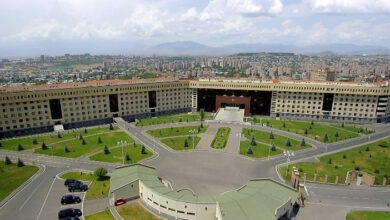June 15 is the day of Armenian state symbols

Alisa Gevorgyan
Public Radio of Armenia
June 15 is the day of Armenian state symbols. The symbols are “eternal truths” that pass not only information, but also values from generation to generation. In a way, they represent the collective memory of mankind.
Like every nation, Armenians have created their symbolsin the course of centuries, but the state symbols are particularly dear to us, as a nation that has lost and regained statehood several times in history.
The third Republic of Armenia inherited and adopted all three symbols of the first Republic of Armenia proclaimed on May 28, 1918 – the flag, the coat of arms and the anthem.
The coat-of-arms of the Republic of Armenia was confirmed on August 23rd 1990 by the Armenian Supreme Counsel. The new modern design is based on the coat-of-arms of the first Republic of Armenia (1918-1920), which originally was designed by architect Aleksandr Tamanyan and painter Hagop Kodjoyan.
In the centre of the shield is Mount Ararat – the symbol of the Armenian nation. On its peak rests Noah’s Ark, which, according to the Bible, came to rest here after the great flood. Surrounding Mount Ararat are symbols of old Armenian dynasties.
At the bottom of the shield are five objects: a broken chain representing our freedom and independence; a sword, which stands for the power and strength of our nation; a bundle of wheat flower, representing the industrious nature of the Armenian people’ a feather pen symbolizing the intellectual and cultural heritage of the Armenian people, and a tricolor ribbon – the flag of the Republic of Armenia.
The Armenian flag has three equal sized horizontal bands: the top stripe is red, the middle one blue and the bottom stripe is orange. The colors on the Armenia flag represent its people.
The red symbolizes the Armenian Highland, the Armenian people’s continued struggle for survival, maintenance of the Christian faith, Armenia’s independence and freedom. The blue stands for the will of the people of Armenia to live beneath peaceful skies. The orange symbolizes the creative talent and hard-working nature of the people of Armenia.
“Mer Hayrenik” (Our Fatherland) is the national anthem of the Republic of Armenia. Adopted on 1 July 1991, it was also the national anthem of the First Republic of Armenia (1918–1920), the first modern Armenian state.
The lyrics of the anthem are adapted from a version of Song of an Italian girl by Mikael Nalbandian (1829–1866) later set to music by composer Barsegh Kanachyan (1885–1967).








